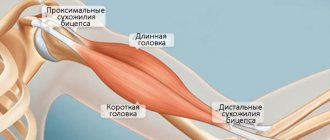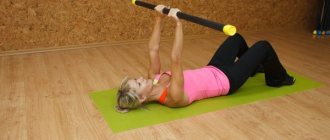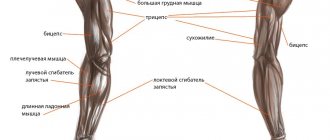Why women need Kegel exercises
To train the pelvic floor muscles, which perform several functions:
- They hold the internal organs in their proper places: the bladder, uterus, rectum and small intestine, preventing their prolapse.
- Provide vaginal tone. That is, they make it narrower and more elastic. And the narrower the vagina, the greater the sensitivity during sex and the brighter the orgasms.
- Protects against accidental stress incontinence (for example, while sneezing, lifting heavy objects, or running).
Without regular exercise, Kegel muscles weaken with age and can no longer effectively perform their functions. The result is a rapid decline in quality of life.
If, let’s say, you can still come to terms with occasional urinary incontinence by using pads, then the prolapse of internal organs is fraught with serious health problems. And a vagina that has lost its elasticity spoils the whole thrill of intimate life.
There is only one way out - to exercise.
Indications for wumbling classes
Do you know that:
- Dissatisfaction with sex life is one of the six main reasons for divorce
- Dissatisfaction in the intimate sphere is the main reason for cheating
- Weakening of the perineal muscles that occurs with age, during pregnancy and childbirth is the main cause of prolapse and prolapse of the walls of the vagina and uterus, and urinary incontinence.
- Every 11th woman is forced to undergo surgery for prolapse and prolapse of the vaginal walls
- More than 40% of women over 40 suffer from some form of urinary incontinence
How to do the classic Kegel exercise for women
Gynecologist Arthur Kegel, who gave the world knowledge about such important muscles, proposed the simplest possible scheme for training them.
Squeeze your muscles for 5-7 seconds. Unclench. Repeat 10–12 times.
The beauty of the classic Kegel exercise is that you can perform it unnoticed and in almost any conditions: even standing on the bus, even sitting in an office chair, even lying on the couch in front of your favorite TV series.
However, over the 70-odd years that have passed since the creation of the classic exercise, more advanced options have appeared. They tighten muscles faster and more efficiently.
How to do gymnastics correctly?
The main goal of Kegel exercises for men is to strengthen the pubococcygeus muscle. Therefore, before starting classes, you need to find it. The easiest way to do this is to imagine that you now need to urinate and then try to stop the stream. It is the pubococcygeus muscle that will work in this case.
The Kegel complex consists of three groups of exercises:
- compression - the pubococcygeus muscle tenses for 3-4 seconds, then relaxes;
- contractions - the muscles of the perineum quickly contract and relax;
- pushing out - the muscles tense, as if pushing out the remains of urine.
When performing Kegel exercises in men, not only the pubococcygeus muscle is activated, but also the anal sphincter, abdominal muscles and perineal muscles, which has a positive effect on their function.
You need to start doing gymnastics with 10 compressions, contractions and push-ups in one approach. You need to do 5 such approaches a day. Gradually the number of repetitions increases to 30. Thus, the total number of exercises increases from 50 to 150 per day. If performed correctly, preliminary results can be assessed within a few weeks.
How to Do Advanced Kegel Exercises for Women
All seven exercises will take no more than 10 minutes. But to achieve the effect, it is enough to choose any three and do them at least once a day.
Most often, the starting position is any comfortable: sitting, standing or lying down. It is important that you feel as comfortable and relaxed as possible.
Quick cuts
Perform the classic Kegel exercise 10 times, with one caveat: you need to contract and relax the muscles as quickly as you can. Give yourself a rest for 7-10 seconds and repeat the high-intensity workout.
What's the point. Training, the goal of which is to do the maximum number of movements in the minimum time, helps increase muscle endurance.
Inhale-exhale
Take a deep breath, gradually squeezing your Kegel muscles as hard as you can. When you realize that you no longer have the strength to take in air or squeeze your muscles, hold the position for 3-5 seconds. Then slowly and smoothly relax while exhaling deeply. Repeat 4-5 times.
The main thing is to concentrate on the pelvic floor muscles during long inhalations and exhalations.
What's the point. Feel the muscles. This will force the Mind-muscle connection training principle: influence of muscle strength and training experience during a pushing movement. them to work more actively and will make the training more effective.
Pushing
Repeat the exercise from the previous paragraph with one amendment: exhale not slowly, but sharply. And at the same time, just as sharply relax the Kegel muscles, as if using them to push air out of the vagina. Repeat 4-5 times.
What's the point . Inhalation and exhalation help you concentrate on a variety of muscle loads.
Hold
Squeeze your Kegel muscles as hard as you can and hold for 10 seconds. Do 5-7 repetitions, each time increasing the time of muscle tension by 1-2 seconds.
What's the point . Under static load. A classic example of static exercises for the whole body is the famous plank. Statics has the same effect on the pelvic floor muscles: it makes them more responsive and elastic, improves metabolism, and increases strength.
Elevator
Imagine that you are going up an elevator. Tighten your pelvic floor muscles harder as the “elevator” reaches a new floor. Having “climbed” 10–15 floors (as far as your strength allows), begin to “descend”, also gradually and consistently relaxing your muscles. Do 3-4 full ascents and descents.
What's the point. Prolonged graded tension is also a kind of static load with all the ensuing consequences for muscle strength.
Gluteal bridge
Lie on your back, bend your knees. Without lifting your feet and shoulders from the floor, lift your pelvis as high as possible. There is no need to squeeze the Kegel muscles. Hold for 5-10 seconds. Get down. Do 15–20 reps.
What's the point. During this exercise, a lot of blood flows to the pelvis. This nourishes the pelvic floor muscles and female genital organs, which can ultimately give you a magical feeling during sex. In addition, the bridge perfectly strengthens the buttocks.
Dancing for your hips
Feet are shoulder-width apart, palms are on hips. Move your hips from side to side, bending your knees slightly. At the far left or right point, squeeze your Kegel muscles as hard as you can. And relax them when your hips begin to move in the opposite direction. Do 20-30 dance moves.
What's the point. This exercise improves blood circulation in the pelvic muscles and genitals. And it strengthens the buttocks and lower abdomen, making it flatter.
Kegel exercises strengthen the pelvic floor muscles, which support the uterus, bladder and rectum, forming the sphincters for the latter - the urethra and the external sphincter of the rectum. You can perform Kegel exercises at least constantly, and it will not be noticeable to others.
You can understand the essence of the exercises by following the instructions step by step.
When are Kegel exercises necessary?
The pelvic floor muscles can be weakened by several factors: pregnancy and childbirth, consequences of surgery, age-related changes, excessive straining due to coughing and chronic constipation, as well as excess body weight.
Kegel exercises will help you in the following cases:
- Leaking small amounts of urine when you cough or sneeze (stress urinary incontinence).
- You have a strong urge to urinate just before you pass a large amount of urine (urinary incontinence)
- Stool incontinence
- Kegel exercises can be performed during pregnancy or after childbirth to prevent urinary incontinence.
Keep in mind that Kegel exercises are less effective for women who leak urine when they sneeze, cough, or laugh. Additionally, Kegel exercises may not help women who suddenly leak small amounts of urine when their bladder is full (overflow incontinence).
How to do Kegel exercises?
To start:
Find the right muscles In order to feel the right muscles, try interrupting the stream of urine in the middle of urination. If you did it, you did it with the right muscles. Once you feel these pelvic floor muscles, you can use them in any position, however, it is easiest to do this while lying down.
Improve your technique. Tighten your pelvic floor muscles, maintain the tension for 5 seconds, and then relax for the next 5 seconds. Do this 3-4 times per set. Practice maintaining tension for 10 seconds, followed by a 10-second pause.
Keep working. For best results, focus on tightening only your pelvic floor muscles. Try not to tense your abdominal muscles or buttocks. Try not to hold your breath. Breathe freely during exercise.
To begin with, do up to 3 approaches per day. Your task is to perform at least 3 sets of 10 repetitions per day.
Don't make a habit of doing Kegel exercises to start or stop urinating. Exercising while emptying your bladder may cause your bladder to not empty completely, increasing your risk of a urinary infection.
When to do Kegel exercises?
Make Kegel exercises a part of your daily routine. You can do Kegel exercises any time, whether you're sitting at your desk or relaxing in a chair.
If you have any problems
If you are having trouble doing Kegel exercises, don't hesitate to ask for help. Your doctor or other health care professional will give you important information on how to find the muscles you need.
In some cases, the use of vaginal cones or biofeedback devices may be necessary. When using vaginal cones, you need to insert them into the vagina and use your pelvic floor muscles to hold them in this position in everyday life. During a biofeedback session, the doctor inserts a pressure sensor into your vagina or rectum. If you tense or relax your pelvic floor muscles, this is recorded and displayed on the monitor.
When to expect improvement?
If you do Kegel exercises regularly, you can expect results, such as a decrease in the frequency of leaking urine, over the next few weeks to several months. To ensure that the positive dynamics are maintained, make Kegel exercises part of your regular life.
Additional ways to cope with incontinence
Normalize your body weight and exercise regularly. Develop a habit of urinating at the same time every day to avoid surprises.
The simultaneous use of all three methods allows women to experience significant improvements in 70% of cases.
It's a good idea not to consume excess fluids—drink only when you feel thirsty.
Avoid drinking carbonated drinks and foods that contain ingredients that irritate the bladder wall - caffeine, alcohol, spices, citrus fruits.
How to do Kegel exercises with exercise machines
Exercise machines designed specifically for the pelvic floor muscles will increase the effect of the exercises.
Vaginal balls
dhgate.com
Your job is to prevent the balls from falling out of your vagina during exercise. This creates additional stress on the muscles and makes the workout more effective.
Both regular vaginal balls and balls with programmable vibration, which makes the muscles work even more intensely, are popular.
What to buy:
- Balloons NS Novelties Inya, 2,200 rubles →
- Silicone balls with a shifted center of gravity Silicone Ben Wa Balls, 1,908 rubles →
- Metal balls of different sizes California Exotic Novelties Graduated Orgasm Balls, 1,690 rubles →
- Small balls with a shifted center of gravity Love Balls, 477 rubles →
- Balls with vibration and control panel Jelly Pink, 1,368 rubles →
Smart Kegel trainers
These devices, which look like small silicone vibrators, will make your muscles work harder. Many models of smart trainers are synchronized with mobile applications for Android or iOS. The application allows you to program the frequency and frequency of vibrations.
What to buy:
- Smart vibrator Adrien Lastic Mini Romeo 2 with remote control, 9,500 rubles →
- We-Vibe Sync smart trainer with the ability to remotely control from a smartphone, 14,900 rubles →
Vibrators for electrical stimulation
In addition to vibration, such a device is equipped with a mode for generating weak pulse currents. They cause additional contraction of the pelvic floor muscles during exercise.
What to buy:
- Intelligent pelvic muscle trainer Mystim Electric Eric, 9,504 rubles →
- Double-sided vibrator with electrical stimulation Nalone Electro, 8,316 rubles →
Indications and contraindications
Healthy women of any age can master Kegel exercises. Vumbuilding improves blood circulation and vaginal tone, this prevents stagnation, stimulates libido, and enhances orgasms.
Other indications for prescribing exercises by a gynecologist:
- congenital dysfunction of the pelvic muscles (anomalies in the development of ligaments and connective tissue);
- pregnancy (facilitate labor, accelerate the dilatation of the cervix, prepare the birth canal for increased load);
- postpartum recovery;
- involuntary urination due to a weak urogenital diaphragm;
- prolapse, prolapse of the pelvic organs (prevention for older women);
- pathologies of the rectum (hemorrhoids, involuntary bowel movements);
- excess weight (it increases the load on the pelvic floor muscles).
The Kegel technique is not recommended for:
- oncological tumors in any organ;
- cardiovascular disorders, heart attack, stroke;
- diseases of the reproductive organs (ovarian cysts, fibroids, polyps, etc.);
- difficult course of pregnancy, threat of premature birth;
- recent surgical intervention (gynecological laparoscopy, cesarean section, etc.).
When not to do Kegel exercises
Do not exercise or stop training if you:
- Do you want to go to the toilet? Before starting exercise, you must empty your bladder and bowels.
- You are experiencing discomfort or pain. This may be due to the fact that you are doing the exercises incorrectly Kegel exercises: A how-to guide for women, and in this case you should not expect any benefit. Consult your gynecologist about this.
- You do not notice improvements with Kegel Exercises 3-4 months after starting regular exercise. This point is also worth discussing with your doctor.
If you are pregnant, have recently had a miscarriage, premature birth, surgery, or have been diagnosed with tumors, consult with your gynecologist before starting exercise just in case.
Kegel exercise: what is it?
A set of exercises developed by American doctor Arnold Kegel is designed to non-surgically strengthen the muscles of the perineum and pelvic floor. The technique is aimed at preventing pathologies that often accompany women with age or after childbirth:
- leakage, urinary incontinence (enuresis);
- fecal incontinence (encopresis), hemorrhoids;
- prolapse, loss of genital organs;
- weak labor activity;
- loss of sensation during sex.
Intimate gymnastics had a positive effect on the condition of more than 90% of the gynecologist’s patients. Over time, exercises began to be used to prevent pathological processes in the male genitourinary system (premature ejaculation, prostatitis, urethritis).
The benefits of the technique manifest themselves with regular training; muscle development requires systematic exercise.
Why are Kegel exercises beneficial for women sexually?
While the medical benefits are helpful, many women want the nitty-gritty details about how Kegel exercises can improve their sex lives. Here's the good news.
These contraction and release exercises increase the intensity of orgasm and enhance climax by increasing blood flow between the reproductive organs. It also improves decreased or absent arousal.
With strengthened pelvic muscles, women can better control how much they contract and pulsate during sex. It also means gaining more control over orgasms and sexual pleasure.
Kegel exercises help women not only increase orgasm, but also relax the vagina. This helps reduce pain symptoms associated with sex or visits to the gynecologist.
Finally, moving your pelvic floor muscles can help you increase lubrication and combat dryness during masturbation or sex.
Other studies show they may also reduce vaginal flatulence, or “queefing.”
Indications for performing intimate gymnastics
First of all, an unusual set of exercises will come in handy:
- pregnant women - to maintain muscle tone, which bear a considerable load during the 2nd and 3rd trimester, to make labor easier and prevent ruptures;
- for ladies over 50 years of age - for the prevention of age-related health problems, as well as as part of the treatment of existing diseases;
- for new mothers - to restore tissues that have undergone significant stretching and return intimate muscles to their prenatal state;
- for those who are faced with the problem of incontinence - to strengthen the corresponding muscles (note that initially Dr. Kegel’s gymnastics were conceived as a way of conservative treatment of incontinence, and only years later they began to be practiced for other purposes);
- for patients with uterine prolapse - to bring this organ to its normal position without surgery and prevent its prolapse;
- women who complain about the lack of orgasm, the reason for which may be not only psychological reasons or any diseases, but also the banal underdevelopment of the intimate muscles, since it is the elastic, elastic, narrow vagina that can not only give special pleasure to the young lady’s sexual partner, but also inflate her own chances of experiencing previously inaccessible sensations to new heights.
Kegel exercises help tidy up the most intimate and delicate area on a woman’s body.
Less commonly, Kegel exercises are recommended for women with diseases of the rectum or who have undergone surgery to remove the uterus. Gymnastics is also used to prevent various types of inflammation in the pelvic organs, counteract the aging process and preserve women’s health, regardless of age.











